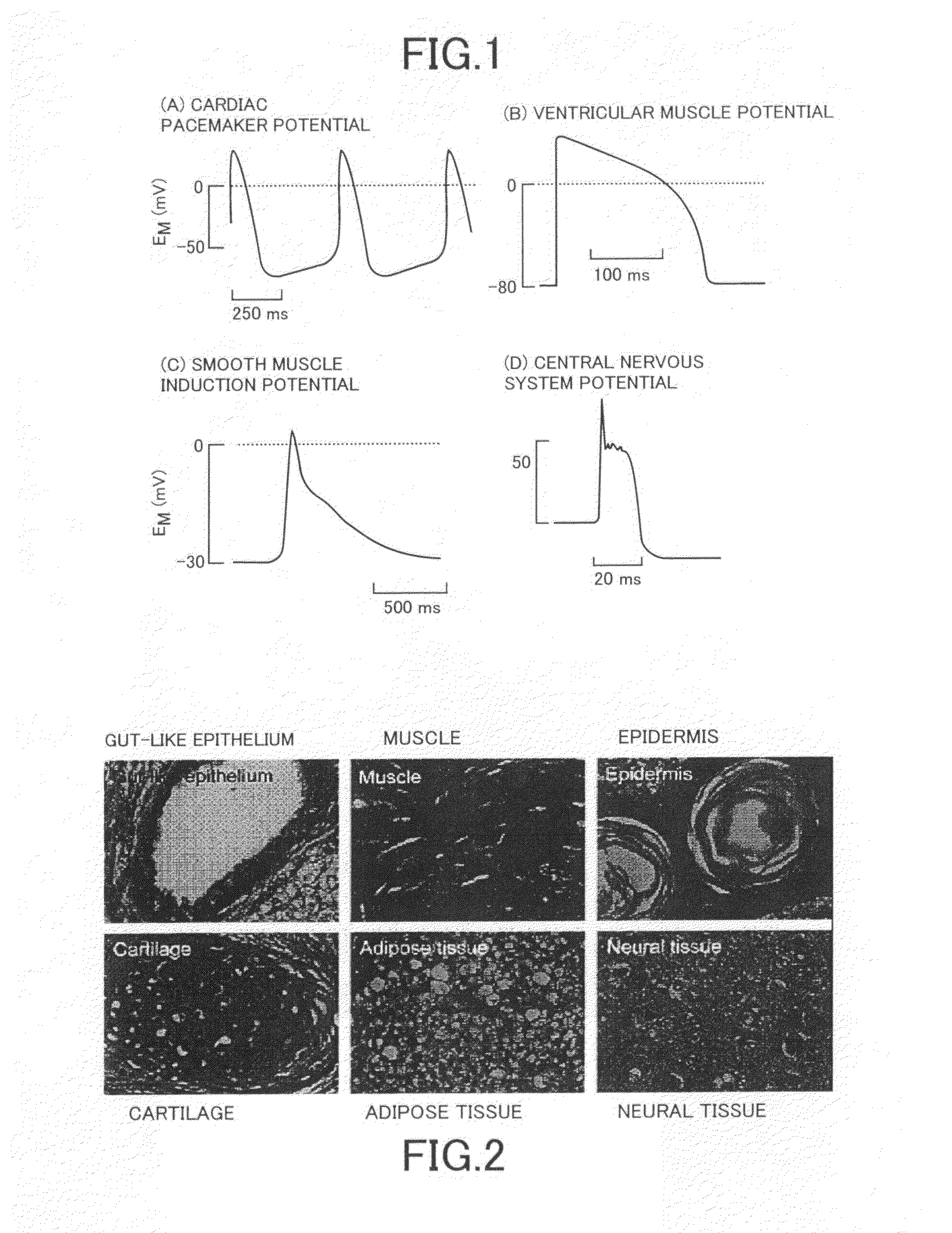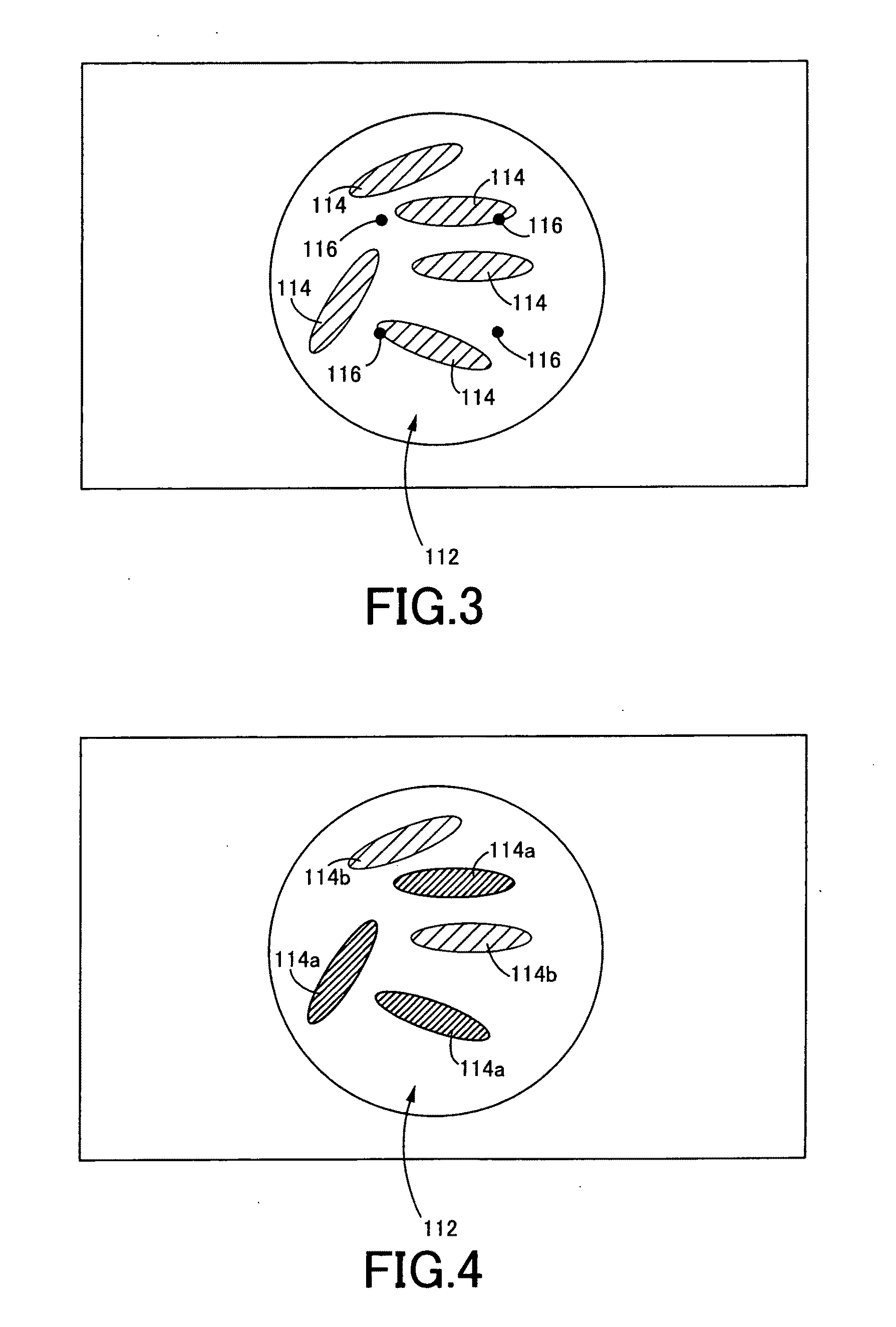Cellular tissue magnetic signal detecting apparatus
a magnetic signal and apparatus technology, applied in the direction of magnetic measurement, measurement device, instruments, etc., can solve the problem of difficulty in establishing such a technology to be an objective techniqu
- Summary
- Abstract
- Description
- Claims
- Application Information
AI Technical Summary
Benefits of technology
Problems solved by technology
Method used
Image
Examples
embodiment 1
[0070]FIG. 8 is a view illustrating an outline of a structure of a cellular tissue magnetic signal detecting device 10 of one embodiment according to the present invention. As shown in FIG. 8, the cellular tissue magnetic signal detecting device 10 includes an experimental bath section 14, two magnetic sensor heads in the form of a first magnetic sensor head 18 and a second magnetic sensor head 20, and a control circuit section 22, etc. Further, the control circuit section 22 outputs a detection result in the form of a magnetic signal, which is subjected to processing in digital conversion with, for instance, an A / D converter section 32 shown in FIG. 8 to be recorded in a computer 34 used for data collection or the like.
[0071]Among these, the experimental bath section 14 includes an experimental bath 56 in which cellular tissues 50 are located as detection objects. FIG. 9 is a view for illustrating a structure of such an experimental bath section 14 in detail. The experimental bath ...
experimental example 1
[0094]A smooth muscle cellular tissue specimen, taken out of a bladder of a marmot, was placed as the cellular tissue 50 in the experimental bath 56. The magnetic sensor heads 18 and 20 are placed below the cellular tissue 50 by operating the manipulator 58, and a localized magnetic fluctuation of the cellular tissue 50 was measured.
[0095]The constant temperature reservoir 68 of the cellular tissue sustaining section 70 was controlled and a liquid temperature of an extracellular fluid, supplied to the experimental bath 56, was adjusted to keep the liquid temperature of the extracellular fluid in the experimental bath 56 under a normal body temperature environment at about 37° C. Then, a diagram shown in FIG. 14 was obtained by the computer 34 representing the time change in the magnetic field generated by the cellular tissue 50. FIG. 14 represents a spontaneous magnetic fluctuation phenomenon. The spontaneous magnetic fluctuation occurred at amplitudes ranging from 500 to 1000 pT.
[0...
experimental example 2
[0098]In Experimental Example 2, like Experimental Example 1 mentioned above, the smooth muscle cellular tissue specimen, representing one example of an excitable cellular tissue, was placed as the cellular tissue 50 in the experimental bath 56. The magnetic sensor heads 18 and 20 are placed below the cellular tissue 50 by operating the manipulator 58, while the liquid temperature of the extracellular fluid in the experimental bath 56 was kept under the normal body temperature environment at about 37° C. Then, the stimulus applying section 76 administered tetraethylammonium as a drug for activating electric excitation onto a part of the cellular tissue 50, located above the magnetic sensor heads 18 and 20, upon which localized magnetic fluctuations in the cellular tissue 50 before and after the administration were measured.
[0099]Before and after the administration of tetraethylammonium, time changes in magnetic fluctuations for respective predetermined times were detected and result...
PUM
 Login to View More
Login to View More Abstract
Description
Claims
Application Information
 Login to View More
Login to View More - R&D
- Intellectual Property
- Life Sciences
- Materials
- Tech Scout
- Unparalleled Data Quality
- Higher Quality Content
- 60% Fewer Hallucinations
Browse by: Latest US Patents, China's latest patents, Technical Efficacy Thesaurus, Application Domain, Technology Topic, Popular Technical Reports.
© 2025 PatSnap. All rights reserved.Legal|Privacy policy|Modern Slavery Act Transparency Statement|Sitemap|About US| Contact US: help@patsnap.com



